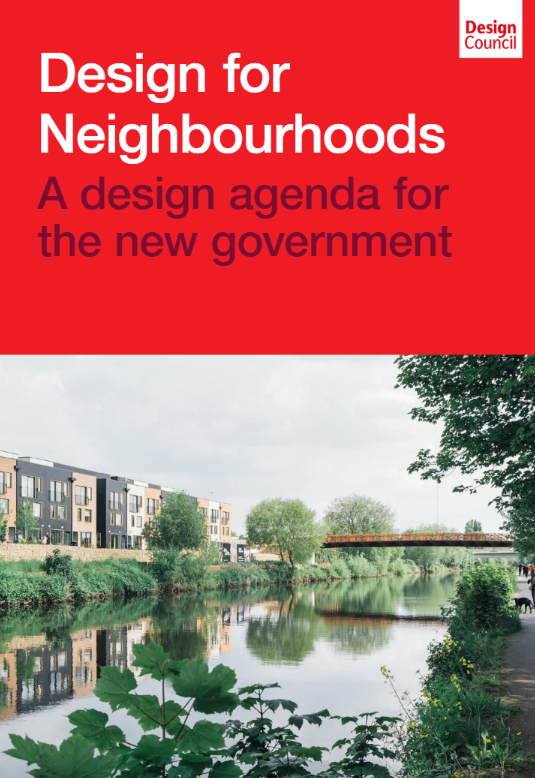
A new Design Council report – ‘Advising the government on the design challenge of creating 1.5 million homes within the UK’s legally-binding climate commitments’-says better housing design could save hundreds of millions of tonnes of carbon while delivering government house building target.
The Design Council writes:
This week the UK’s national champion for design, the Design Council, has unveiled a major report setting out how the government could achieve its 1.5 million homes target without breaking the UK’s carbon budget.
Titled Design for Neighbourhoods, the report argues that improving UK housing design quality is the only way to deliver 1.5 million homes without breaking the Paris Agreement.
The landmark report, which was developed with input from policy makers and leading design and house building experts, argues that simply building more of Britain’s typical newbuild developments is not an option. Instead, the Design Council Homes Taskforce have set out ten policy recommendations to create genuinely sustainable, thriving communities.
Among the most striking recommendations are the creation of Zero Carbon New Towns, placing strict limits on car infrastructure; regulating the use of high carbon materials like steel and concrete; and ending the prevalence of single-use buildings that quickly become obsolete.
The report also calls for a National Design Review Framework to ensure quality is at the heart of all developments across the UK, and for local government to take a more active role in shaping neighbourhoods rather than leaving master planning to market forces.
‘The housing crisis is not just about numbers – it’s about quality, sustainability, and livability,’ said Sadie Morgan OBE, a member of the Design Council Homes Taskforce which developed the report. ‘We cannot afford to repeat past mistakes. Our recommendations give government and industry the policy levers they need to create resilient, future-proofed, low carbon neighbourhoods that people love to live in.’
The report also takes aim at poorly designed newbuild housing developments, proposing legislation to eliminate ‘lonely corridors’ that isolate residents and to ensure access to outdoor play is factored into all new developments to promote community cohesion.
Architect and 1V presenter George Clarke who was one of the many experts who contributed to the development of the report said, ‘As the Labour government embarks on the most ambitious national house building agenda for decades, I’m delighted that the Design Council Homes Taskforce has published this inspiring and essential report. In Washington, where I grew up, they didn’t just design homes, they designed a neighbourhood. By implementing the policy recommendations of this report, the government could too.’
As the government embarks on its ambitious housebuilding programme, Design for Neighbourhoods provides a roadmap to ensure that Britain’s new homes are not just built quickly but built well.
Key points
- Current newbuild housing is poor quality and high carbon.
- 74% of UK newbuild homes are currently ‘poor or mediocre’.
- Badly designed new housing developments currently generate over a tonne of carbon dioxide or equivalent greenhouse gases per square metre of construction.
- 62% of UK waste comes from the construction and demolition sector.
- By acting to improve housing design, the government could maximise the quality and quantity of new housing sustainably
- By ensuring better housing design, the government could save hundreds of millions of tonnes of carbon emissions while building at scale.
- Count existing but vacant homes brought back into use towards overall house building targets (and set percentage target for homes brought back into use) Control use of high carbon materials by adopting building regulations for embodied carbon.
The full report is available at Design Council Homes Taskforce – Design Council
For media inquiries, interviews, or further information, please contact:
press@designcouncil.org.uk
